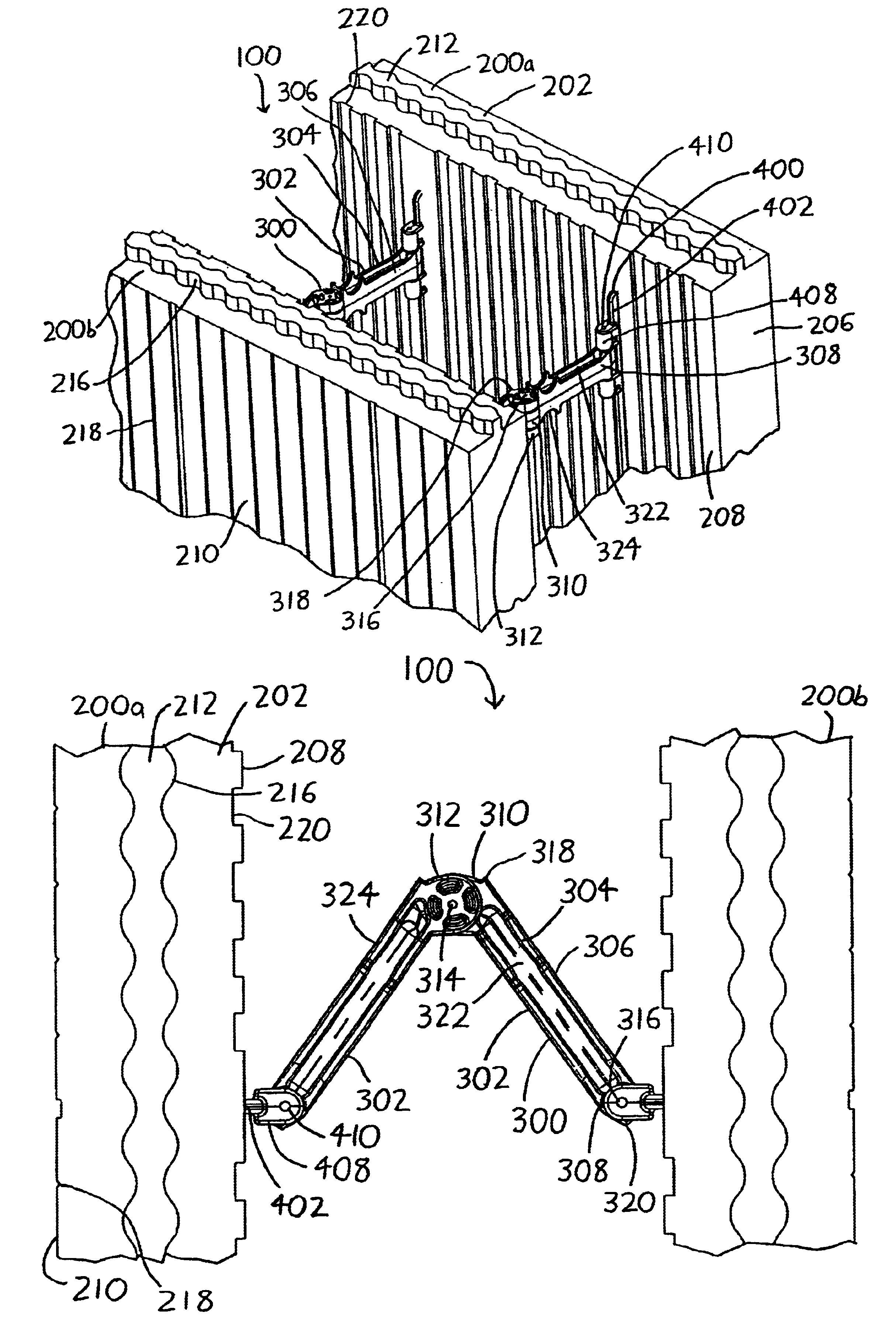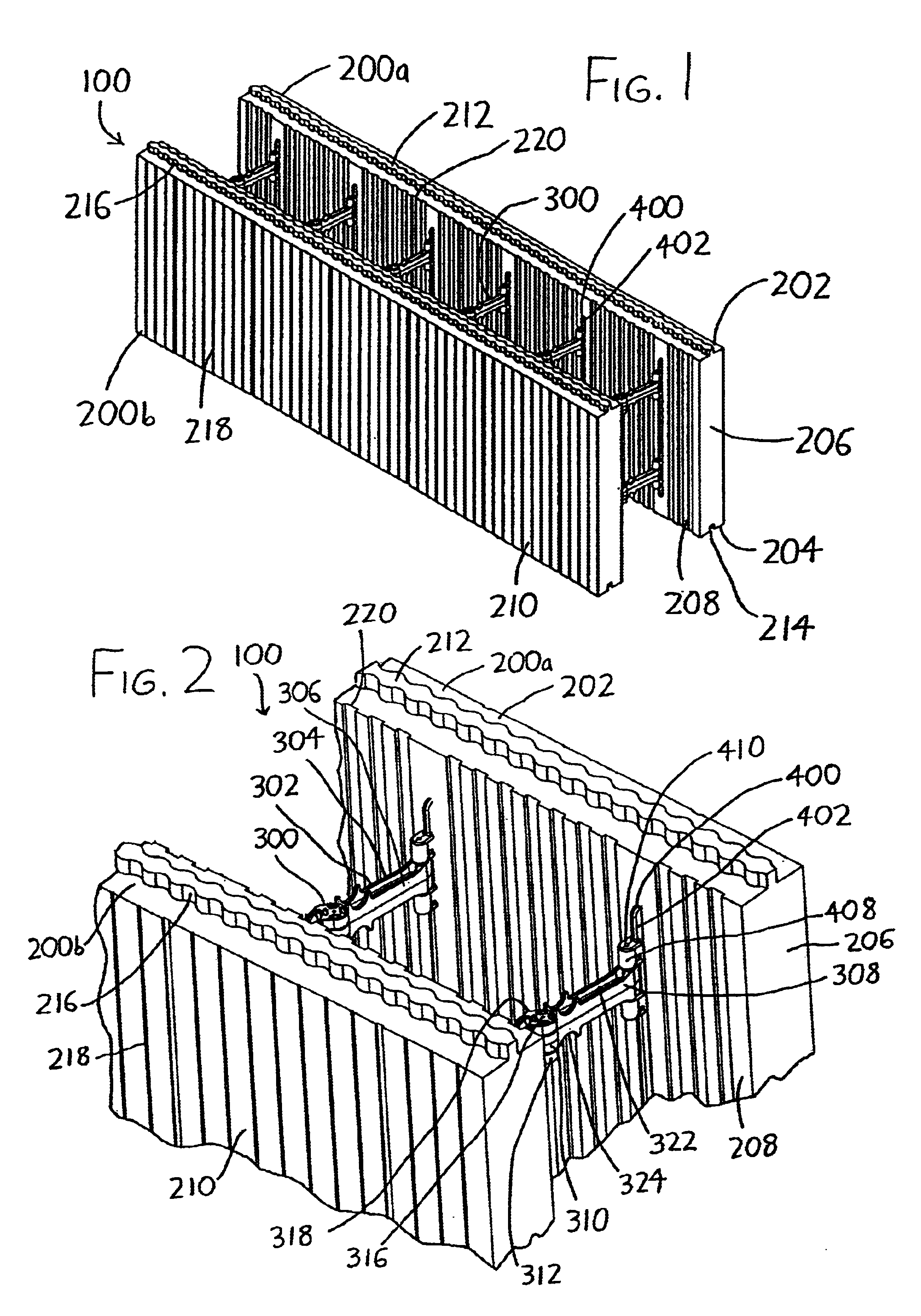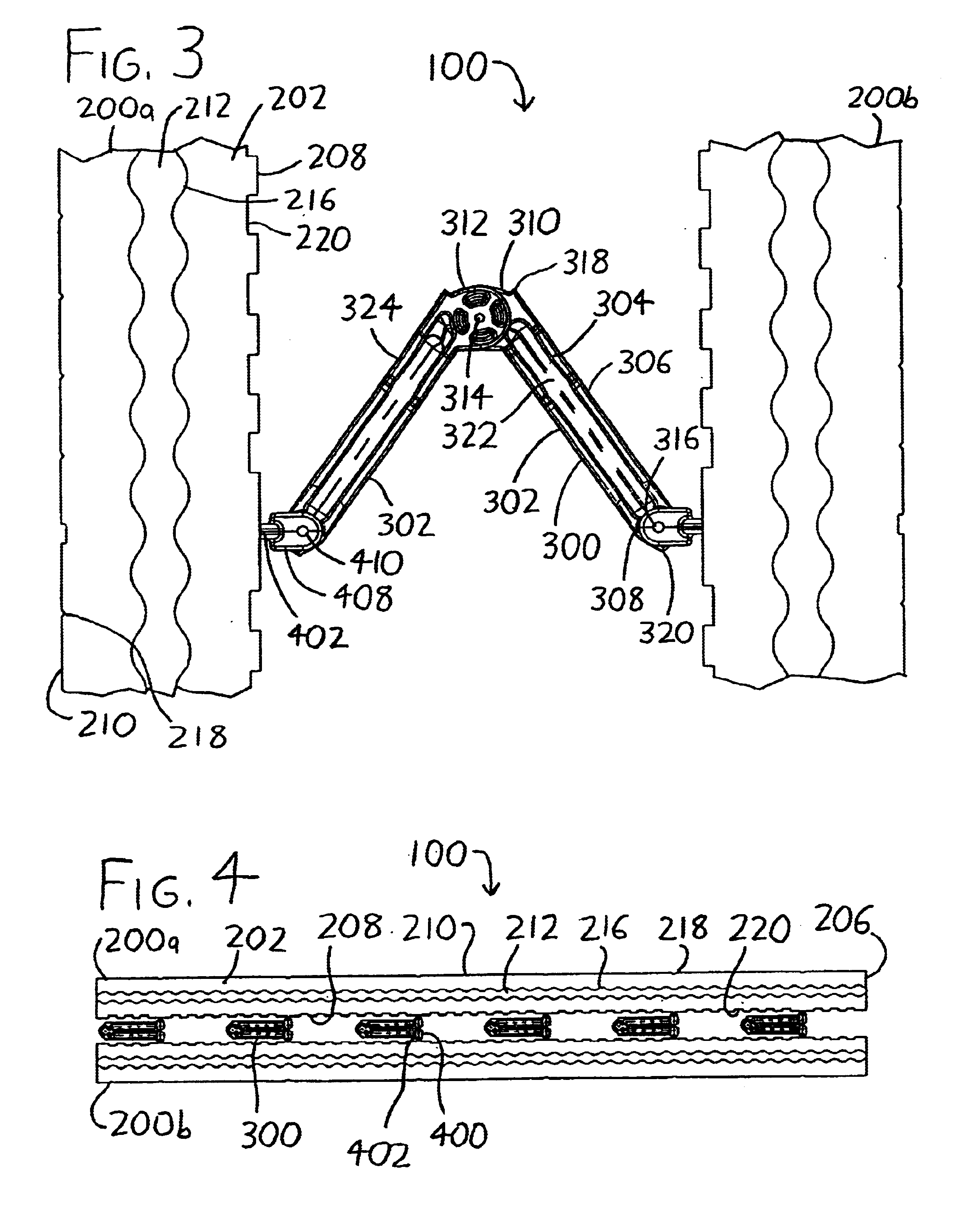Collapsible concrete forms
a concrete form and collapsible technology, applied in the field of concrete forms, can solve the problem of not allowing further pivoting, and achieve the effect of facilitating storage and minimal loss of storage volum
- Summary
- Abstract
- Description
- Claims
- Application Information
AI Technical Summary
Benefits of technology
Problems solved by technology
Method used
Image
Examples
Embodiment Construction
[0017]Referring particularly to FIGS. 1-4, an exemplary preferred version of a collapsible concrete form unit is depicted generally by the reference numeral 100. The concrete form unit 100 includes sidewalls 200a and 200b (hereinafter collectively referred to as sidewalls 200) between which concrete is to be poured when the concrete form unit 100 is used within a concrete form (i.e., when multiple concrete form units 100 are assembled into a completed concrete form). The concrete form unit 100 additionally includes spacers 300, which serve to hold the sidewalls 200 in spaced relation during the pouring and setting of concrete therebetween. As will be discussed in greater detail below, the concrete form unit 100 is collapsible from the expanded state (illustrated in FIGS. 1 and 2) to a collapsed state (illustrated in FIG. 4), with the spacers 300 being articulated to hingedly fold between the expanded and collapsed states. This transition can be partially envisioned with reference to...
PUM
 Login to View More
Login to View More Abstract
Description
Claims
Application Information
 Login to View More
Login to View More - R&D
- Intellectual Property
- Life Sciences
- Materials
- Tech Scout
- Unparalleled Data Quality
- Higher Quality Content
- 60% Fewer Hallucinations
Browse by: Latest US Patents, China's latest patents, Technical Efficacy Thesaurus, Application Domain, Technology Topic, Popular Technical Reports.
© 2025 PatSnap. All rights reserved.Legal|Privacy policy|Modern Slavery Act Transparency Statement|Sitemap|About US| Contact US: help@patsnap.com



